Understanding the Role of ABA Therapy in Emotional Expression
Autism spectrum disorder (ASD) can present unique challenges in emotional expression, particularly in managing frustration and tantrums. Applied Behavior Analysis (ABA) therapy offers a structured, individualized approach that equips children with the skills necessary for appropriate emotional regulation. By addressing the root causes of challenging behaviors, ABA supports children in communicating their needs and feelings effectively, fostering greater independence and social integration.
Fundamentals of ABA Therapy in Addressing Challenging Behaviors
What is ABA therapy?
Applied Behavior Analysis (ABA) therapy is a scientific approach that focuses on understanding and improving specific behaviors. It is widely used for children with autism spectrum disorder (ASD) to help develop skills, reduce problematic behaviors, and promote independence. ABA involves careful observation, assessment, and the implementation of strategies based on behavior principles.
Why is ABA effective for children with ASD?
ABA is considered effective because it targets the root causes of behaviors, including challenging ones like tantrums. Through techniques such as antecedent manipulation, positive reinforcement, and structured routines, ABA helps children learn alternative behaviors. Using visual aids, clear expectations, and consistency across environments creates a predictable setting, which reduces anxiety and triggers for tantrums.
How does ABA conceptualize tantrums and frustration?
In ABA, tantrums are viewed as communication acts — especially in children who have difficulty expressing their needs verbally. They often occur due to triggers such as sensory overload, change in routine, or communication challenges. Distinguishing between tantrums and meltdowns is important: tantrums are goal-directed and response-driven, while meltdowns are intense emotional overloads.
How does ABA therapy support children in expressing their frustration appropriately?
ABA therapy helps children express frustration in healthier ways by teaching them specific skills. Visual tools like emotion charts and social stories assist children in recognizing and labeling their feelings. Coping techniques such as deep breathing, requesting breaks, and calming routines are introduced to manage emotions.
Reinforcement is used to encourage desirable behaviors like asking for help or using words or signs instead of tantrums. Role-playing, video modeling, and social stories provide safe practice environments, helping children feel more confident in handling their emotions.
In addition, involving parents and caregivers in training ensures these skills are practiced consistently across different settings. This integrated approach leads to better emotional regulation and reduces the frequency and intensity of tantrums, supporting children in navigating their experiences more effectively.
Strategies and Techniques in ABA for Emotional Regulation
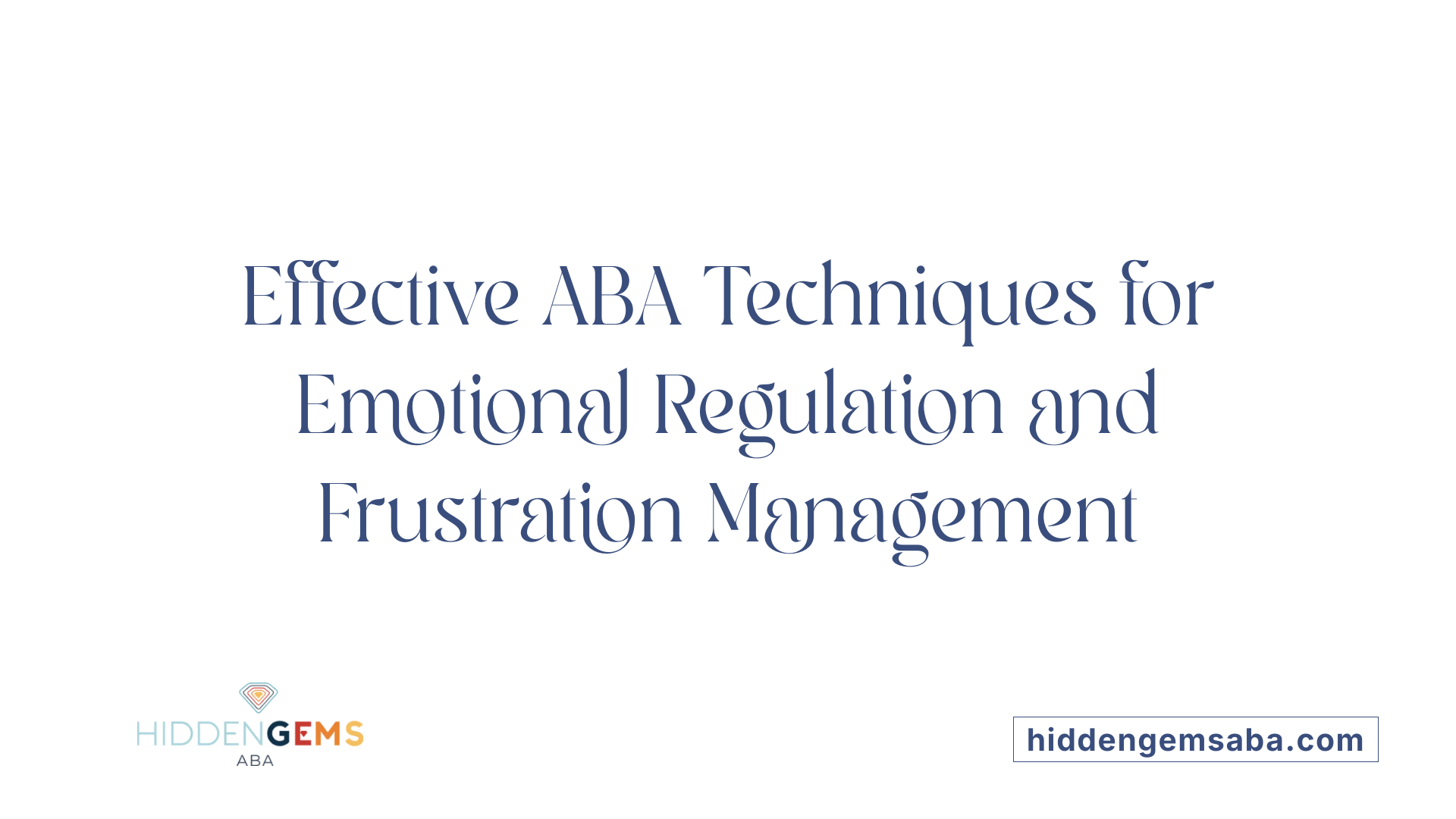 ABA therapy incorporates multiple approaches to help children with autism spectrum disorder (ASD) develop better emotional regulation and express frustrations appropriately.
ABA therapy incorporates multiple approaches to help children with autism spectrum disorder (ASD) develop better emotional regulation and express frustrations appropriately.
One effective method involves the use of visual aids, such as emotion charts or social stories, which help children identify and understand different feelings. These tools guide kids in recognizing their emotions and selecting appropriate responses, reducing the likelihood of tantrums caused by uncertainty or frustration.
Functional Communication Training (FCT) plays a vital role in teaching children alternative ways to communicate their needs, whether through verbal words, signs, or communication devices. By giving children effective outlets for expression, FCT decreases behaviors driven by communication struggles and helps manage emotional outbursts.
Teaching coping skills like deep breathing, requesting breaks, or engaging in calming routines empowers children to self-regulate during stressful moments. Consistent practice of these skills, reinforced at home and in therapy, supports children in managing their emotions proactively.
Modeling and role-playing are also widely used techniques. Therapists demonstrate appropriate emotional responses and practice scenarios with children, reinforcing positive behaviors and improving their ability to handle real-life situations.
Structured routines and visual schedules contribute to predictability, which can significantly reduce anxiety and prevent triggers for emotional outbursts. Combining these strategies provides a comprehensive approach to enhancing emotional resilience in children with ASD.
Benefits of ABA in Managing Frustration and Tantrums
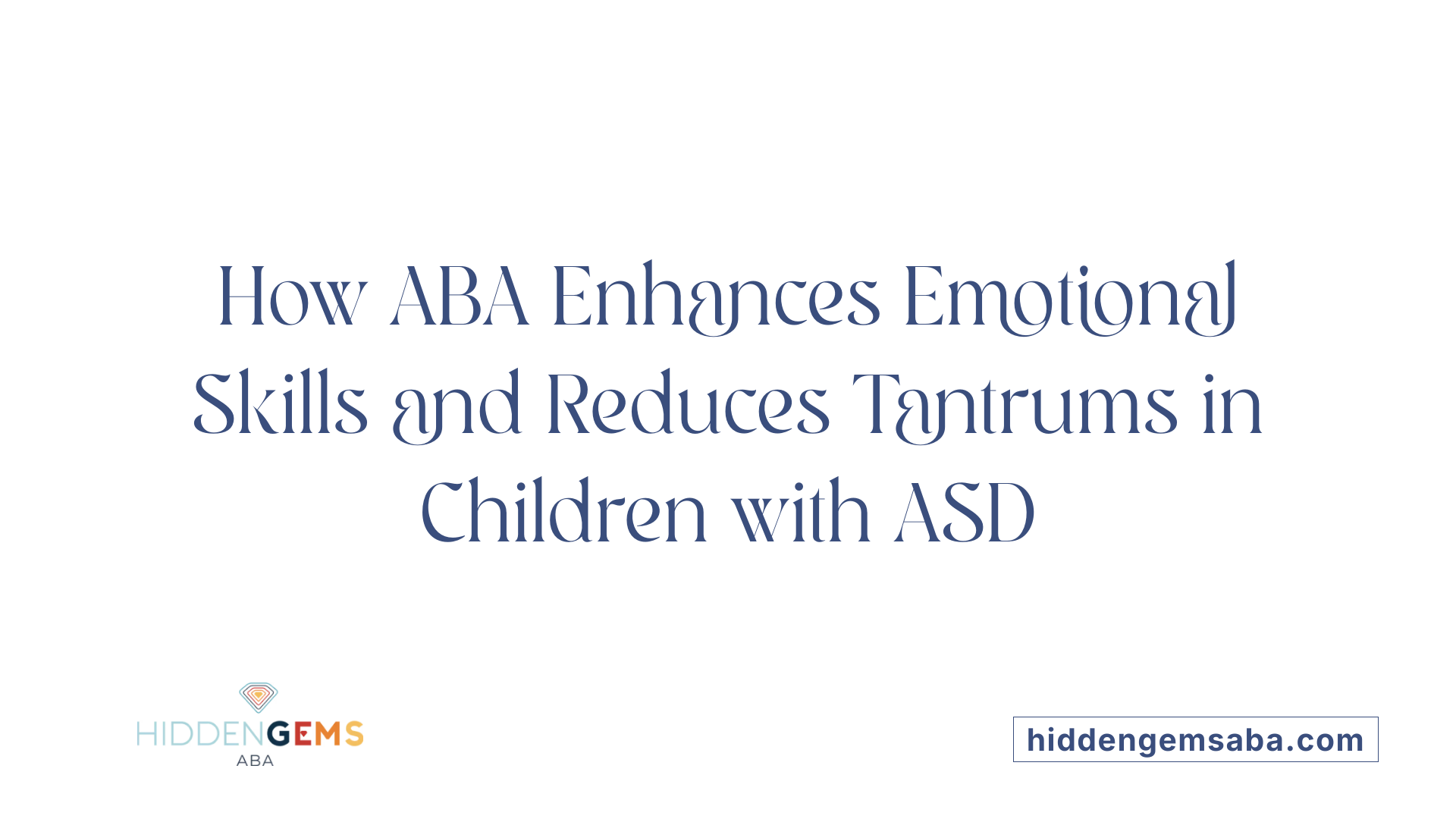
Developing emotional regulation skills
ABA therapy helps children with autism develop essential emotional regulation skills. Therapists teach children to recognize and label their feelings, which is often a challenge due to communication difficulties. By understanding what they are experiencing, children can better manage their reactions.
Understanding the triggers of tantrums
A core component of ABA is identifying the reasons behind tantrums through Functional Behavioral Assessment (FBA). Common triggers include sensory overload, routine changes, or communication struggles. Recognizing these triggers allows for proactive strategies like antecedent manipulation, where environmental factors are modified to prevent escalation.
Reinforcing positive communication and behavior
Teaching and reinforcing alternative communication methods, such as sign language, picture exchanges, or communication devices, helps children express their needs clearly. Rewarding efforts to communicate effectively encourages children to use these skills, reducing frustration-driven behaviors.
Improving independence and emotional stability
Structured routines and visual schedules create predictability, reducing anxiety. When children understand what to expect, they are less likely to become overwhelmed or resistant. Consistent reinforcement of positive behaviors and coping skills like deep breathing or sensory tools support greater independence and emotional resilience.
| Aspect | How ABA Supports | Benefits |
|---|---|---|
| Emotional regulation | Teaching feelings recognition and coping skills | Helps children manage reactions |
| Trigger identification | FBA to explore underlying causes | Allows targeted interventions |
| Communication skills | Using visual aids and alternative methods | Reduces frustration and tantrums |
| Structured routines | Visual schedules and environmental modifications | Decreases anxiety and resistance |
ABA therapy offers a structured, personalized approach that significantly benefits children with autism. By addressing emotional regulation, understanding triggers, reinforcing communication, and fostering independence, ABA helps reduce tantrums and enhances overall emotional well-being.
Understanding Behavioral Responses to Frustration and Tantrums
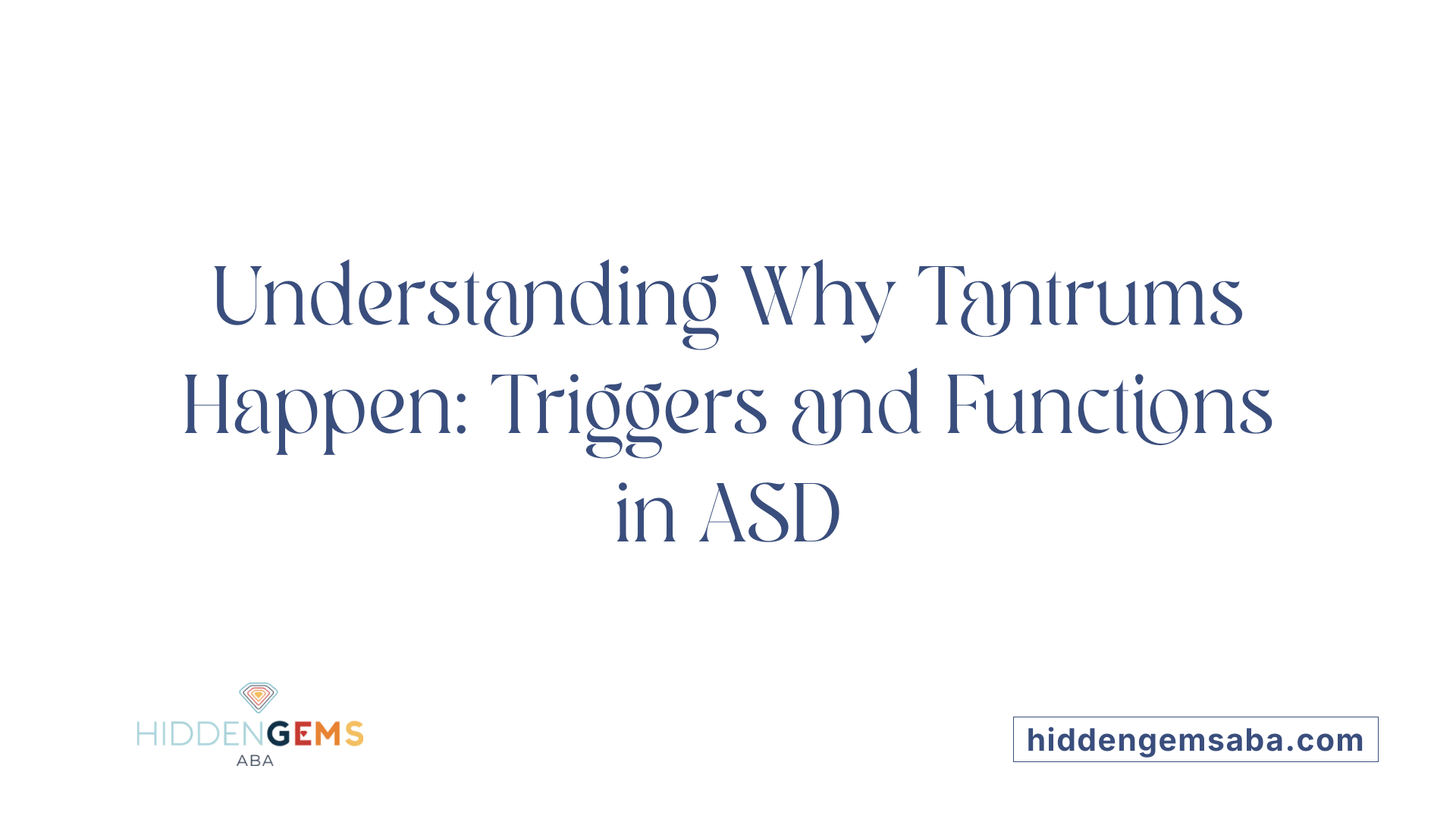 Recognizing what triggers tantrums in children with autism spectrum disorder (ASD) is crucial for effective management. Common causes include sensory overload, sudden changes in routines, and communication difficulties. For children with limited verbal skills, tantrums often serve as a way to express unmet needs or frustrations.
Recognizing what triggers tantrums in children with autism spectrum disorder (ASD) is crucial for effective management. Common causes include sensory overload, sudden changes in routines, and communication difficulties. For children with limited verbal skills, tantrums often serve as a way to express unmet needs or frustrations.
It’s important to differentiate between tantrums and meltdowns. While tantrums are responses driven by a child's desire to communicate or escape a situation, meltdowns are intense emotional overloads that can occur when sensory or emotional thresholds are exceeded. Understanding this distinction helps caregivers respond appropriately.
A core step in managing tantrums is understanding their purpose or function. Using a process called Functional Behavioral Assessment (FBA), therapists identify whether behaviors serve to gain attention, escape a task, access tangible items, or seek sensory input. With this knowledge, targeted strategies can be implemented to address the real needs of the child.
Physiological signs such as increased heart rate, sweating, or muscle tension often accompany frustration, indicating when a child is overwhelmed. Recognizing these signs early enables caregivers to intervene before behavior escalates.
By understanding how children react emotionally and physically to various triggers, caregivers can develop personalized intervention plans. These may include teaching alternative communication methods, providing sensory tools, and creating predictable routines to help children manage their emotions. Consistent support and proactive environmental modifications are vital to reducing tantrum frequency and severity.
The Role of Visual Supports in Managing Emotions
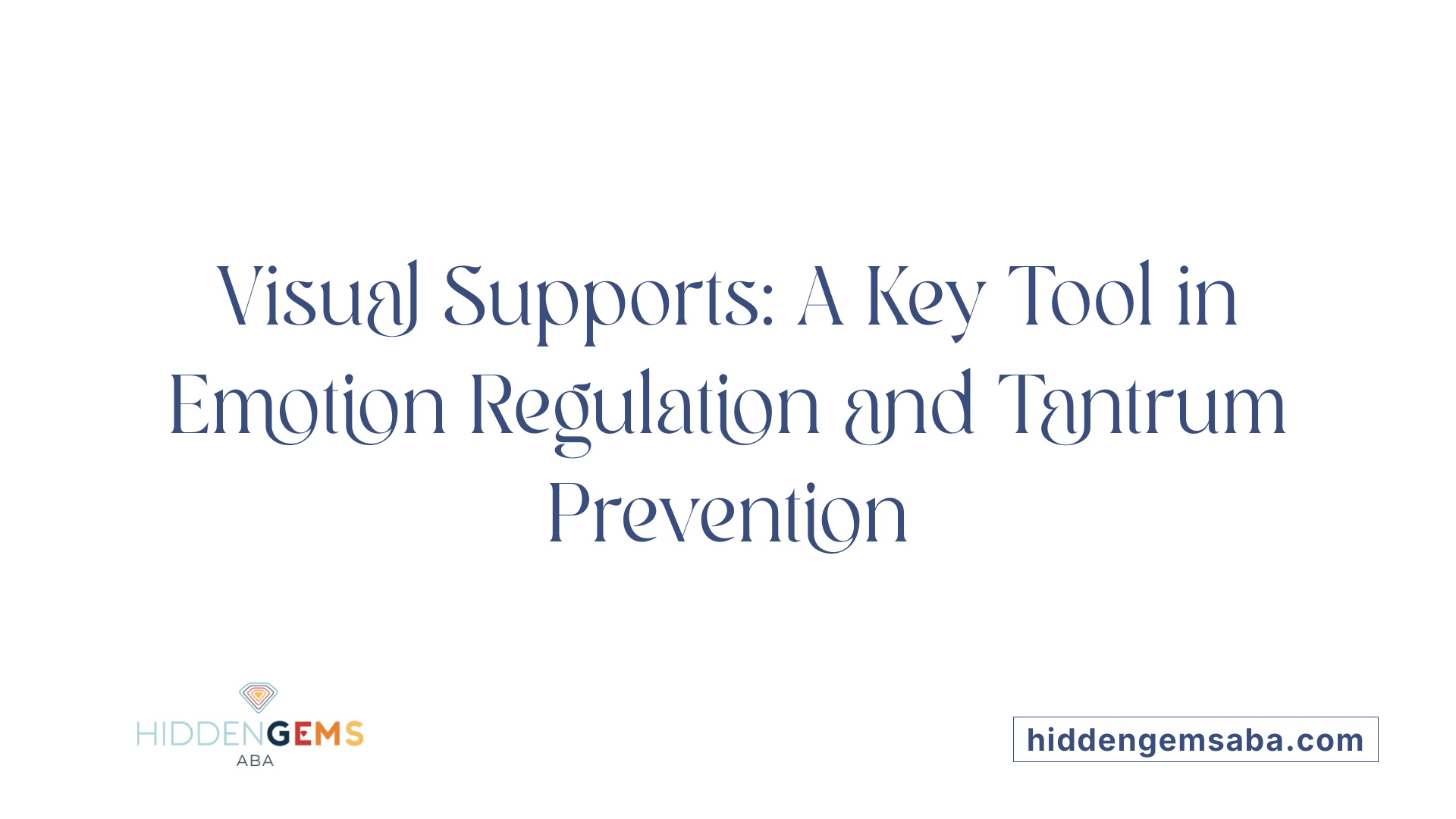
How does visual support aid in managing frustration and tantrums?
Visual supports such as emotion charts, social stories, and visual schedules are vital tools in helping children with autism spectrum disorder (ASD) manage their emotions and reduce tantrums. These aids provide clear and predictable information, assisting children in understanding what to expect and how to express their feelings.
Emotion charts allow children to identify and communicate their current feelings, which can prevent frustration from converting into tantrums. Social stories explain situations that might be confusing or challenging, giving children a better grasp of expected behaviors and routines.
Visual schedules break down daily routines into visual steps, helping children anticipate upcoming activities. This reduces anxiety linked to uncertainty, which is a common trigger for tantrums.
Anticipating routines to reduce anxiety
Having predictable routines supported by visual cues provides children with a sense of security and control. When children know what will happen next, they are less likely to become overwhelmed or frustrated.
Scheduled visual cues can include picture cards or timers indicating transition points, such as moving from playtime to mealtime. When children can see what’s coming, they are better prepared emotionally and behaviorally.
Implementing visual cues for calming and communication
Visual cues are also used to promote calming strategies. For example, picture cards illustrating a sensory break or calm-down corner remind children of their ability to self-regulate.
In practical terms, visual supports empower children to communicate their needs more effectively. For kids who struggle with verbal expression, images of desired objects, feelings, or actions serve as alternative communication methods.
Consistent use of visual tools across different environments—home, school, therapy sessions—helps children develop a better understanding of their emotions and how to manage them. Over time, these supports promote emotional regulation, ultimately leading to fewer tantrums and more positive behavior.
| Visual Support Type | Purpose | Benefits | Example Use Cases |
|---|---|---|---|
| Emotion charts | Identify feelings | Promote emotional awareness | Child points to a happy face or upset face |
| Social stories | Explain routines and social skills | Reduce confusion and anxiety | Step-by-step picture story about going to the park |
| Visual schedules | Outline daily routines | Enhance predictability | Pictures of activities in sequence |
| Calming cues | Facilitate self-regulation | Encourage calming behavior | Photos of a calm-down corner or sensory tools |
By integrating these visual support methods, caregivers and therapists can create a structured environment that helps children with ASD better understand, express, and regulate their emotions.
Crisis Prevention and Last-Resort Strategies in ABA
What are effective ABA strategies for managing tantrums?
Effective behavioral intervention in ABA for managing tantrums often combines proactive strategies with last-resort techniques to create a safe and supportive environment for children with autism spectrum disorder (ASD).
Proactive behaviors are essential in preventing tantrums before they escalate. Providing warnings during transitions or changes helps children prepare mentally and emotionally, reducing surprise and resistance. For example, using visual timers or verbal cues about upcoming activities allows children to anticipate what’s next, decreasing anxiety.
Structured routines and clear expectations are vital. Visual schedules, picture cards, or daily routines mapped out in a predictable manner help children understand what to expect, which lowers the likelihood of triggers like confusion or sensory overload.
When tantrums do occur, calm-down techniques serve as critical last-resort strategies. These include using a designated safe space equipped with sensory tools or calming routines to help children regain control of their emotions. Time-out, used sparingly and as a last resort, involves removing the child from the triggering situation in a calm, non-punitive manner to reduce reinforcement of disruptive behavior.
Consistency is crucial across all environments—home, school, or therapy settings. Reinforcing positive behaviors through praise and rewards encourages children to communicate their needs effectively, which can lessen tantrum frequency. Redirecting to alternative activities or teaching functional communication skills like sign language or picture exchange enhances a child’s ability to express frustrations or needs.
Overall, combining preventative measures with appropriate response strategies creates a balanced approach. This helps children develop emotional regulation skills and enhances their ability to cope with frustration, ultimately reducing the occurrence and severity of tantrums.
Integrating Caregiver Training and Support
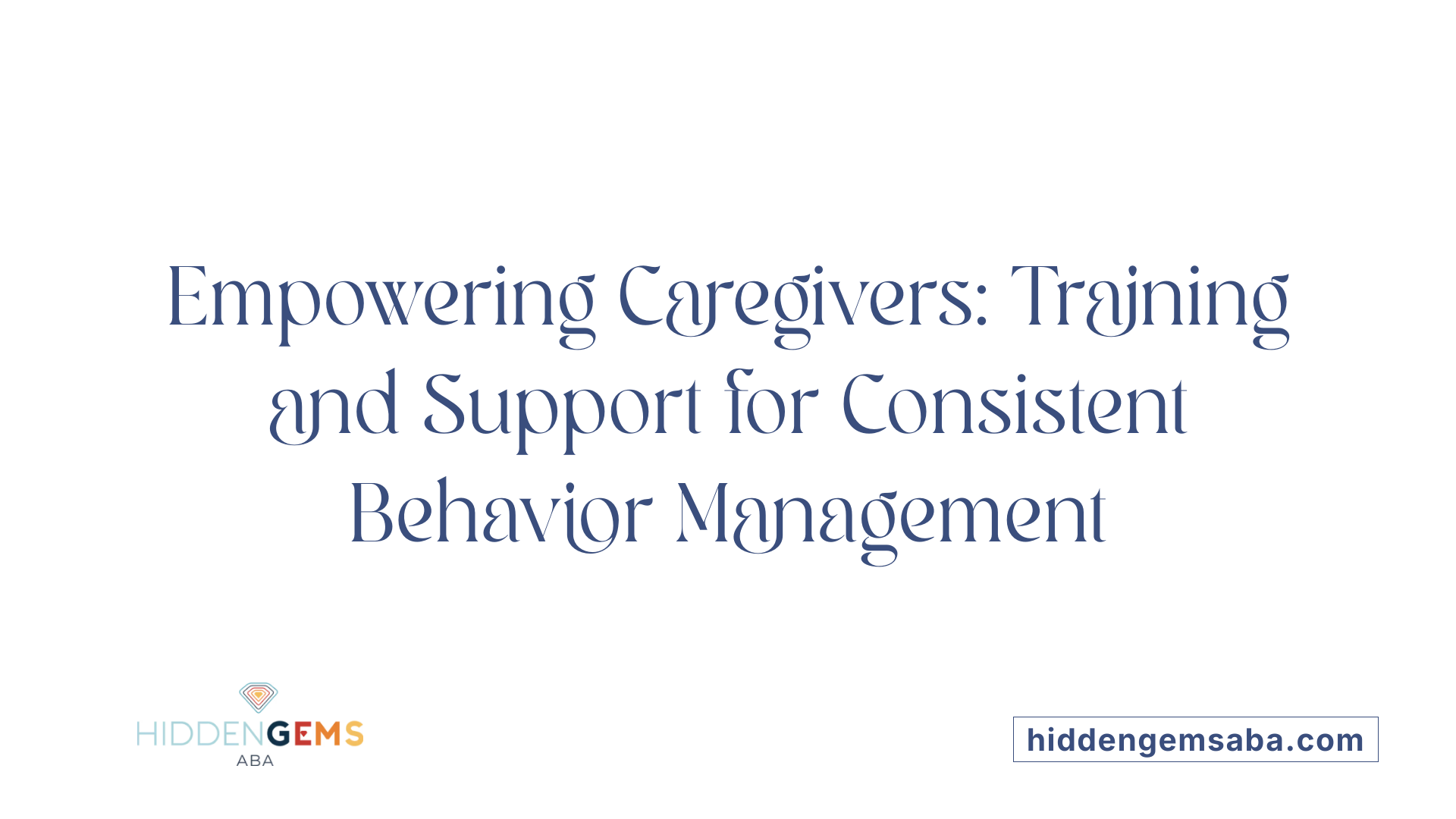 Involving parents and caregivers in training sessions is crucial for the success of ABA therapy in managing tantrums and other challenging behaviors. When caregivers understand the underlying reasons for behaviors such as frustration and tantrums, they can implement consistent strategies across different settings like home, school, and community. This consistency helps children develop better self-regulation skills and reduces the likelihood of behaviors escalating.
Involving parents and caregivers in training sessions is crucial for the success of ABA therapy in managing tantrums and other challenging behaviors. When caregivers understand the underlying reasons for behaviors such as frustration and tantrums, they can implement consistent strategies across different settings like home, school, and community. This consistency helps children develop better self-regulation skills and reduces the likelihood of behaviors escalating.
Training typically covers how to identify triggers, use visual schedules, and reinforce positive communication methods. Caregivers learn to recognize signs of emotional distress early and apply calming routines or sensory tools, which can prevent tantrums before they occur.
A core part of effective ABA intervention is the generalization of skills. Skills learned in therapy sessions need to be practiced across various environments to become natural responses for children. Caregiver involvement ensures that strategies are applied consistently, helping children internalize new behaviors and communication methods.
Proactive management includes creating predictable routines with visual supports to reduce anxiety. Moreover, caregivers are trained to avoid unintentionally reinforcing tantrums by withholding attention during outbursts and instead focusing on rewarding appropriate behaviors.
Understanding behavioral responses related to frustration and tantrums greatly assists in managing these behaviors. It allows caregivers and therapists to see behaviors as forms of communication, especially when verbal skills are limited. Recognizing whether irritability is caused by communication struggles, sensory overload, or emotional upset enables tailored intervention strategies.
This understanding supports the implementation of functional behavior analysis (FBA), which helps identify why a tantrum occurs—be it escape, seeking attention, tangible items, or sensory input. More importantly, it guides the use of differential reinforcement, teaching children to express their needs calmly and appropriately.
By fostering comprehensive caregiver training and ongoing support, families are empowered to handle challenging behaviors effectively. They can apply consistent, proactive approaches, making the therapy more impactful and improving overall behavioral outcomes for children with ASD.
Fostering Emotional Well-Being Through Structured Support
ABA therapy plays a vital role in helping children with autism navigate emotional challenges by promoting effective communication, teaching coping strategies, and understanding the function of behaviors like tantrums. Using visual supports, reinforcing positive behaviors, and involving caregivers ensures skills are generalized across all settings. With a proactive and individualized approach, ABA empowers children to express frustration appropriately, leading to improved emotional well-being and greater independence.
References
- Effective ABA Strategies for Dealing with Tantrums
- How to Deal with Tantrums in ABA Therapy: Effective Strategies
- How to Deal with Tantrums in ABA Therapy: Effective Strategies
- Teaching Children to Self-Regulate Their Emotions - ABA Therapy
- Simple Evidence-based Strategies for Teaching Emotion Regulation
- How ABA Therapy Supports Emotional Regulation in Children
- From Meltdowns to Calm:ABA Therapy Strategies for Managing ...
- Emotion Regulation: Concepts & Practice in Autism Spectrum Disorder
- ABA Therapy's Role in Emotional Regulation
- From Meltdowns to Calm:ABA Therapy Strategies for Managing ...






